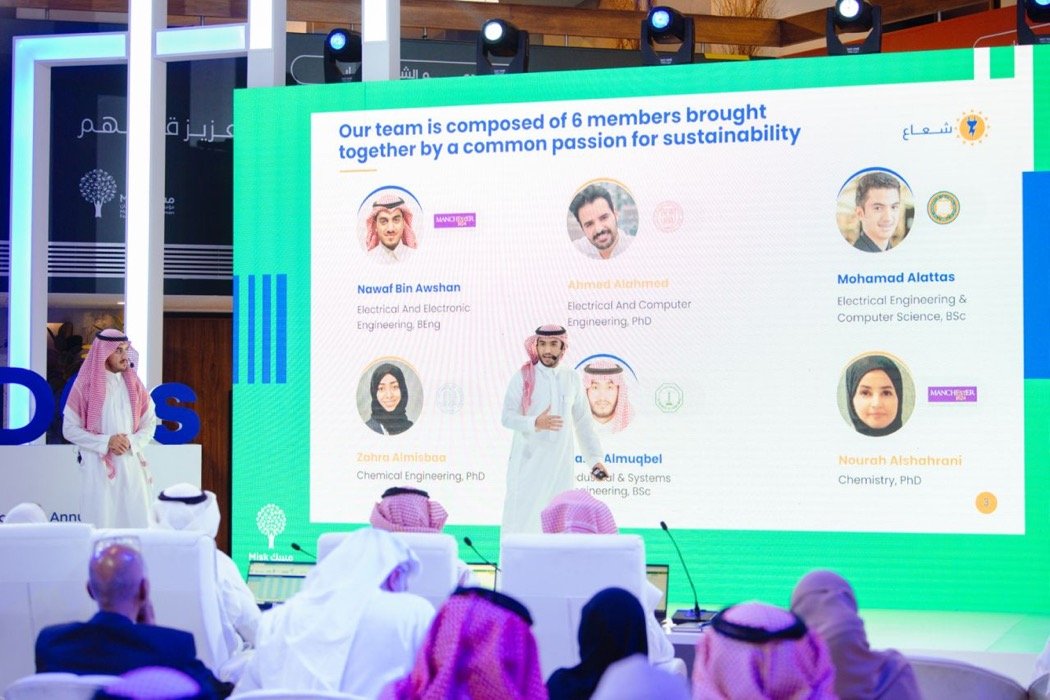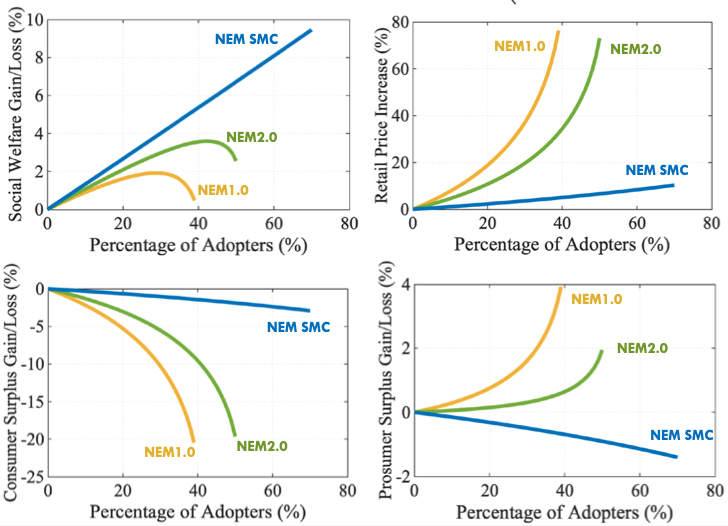I published a new preprint with Prof. Lang Tong on social optimality for energy communities via a pricing mechanism we called Dynamic Net Energy Metering (DNEM).
Under the proposed mechanism:
community members’ individual surplus maximizations lead to maximum community social welfare.
community members’ individual surplus under Dynamic NEM is higher than the maximum surplus under the utility’s NEM.
the community payment rule satisfies the cost-causation principle.
Preprint link: arXiv.
Preprint title: Achieving Social Optimality for Energy Communities via Dynamic NEM Pricing.
Preprint Abstract: We propose a social welfare maximizing mechanism for an energy community that aggregates individual and shared community resources under a general net energy metering (NEM) policy. Referred to as Dynamic NEM, the proposed mechanism adopts the standard NEM tariff model and sets NEM prices dynamically based on the total shared renewables within the community. We show that Dynamic NEM guarantees a higher benefit to each community member than possible outside the community. We further show that Dynamic NEM aligns the individual member's incentive with that of the overall community; each member optimizing individual surplus under Dynamic NEM results in maximum community's social welfare. Dynamic NEM is also shown to satisfy the cost-causation principle. Empirical studies using real data on a hypothetical energy community demonstrate the benefits to community members and grid operators.


















































